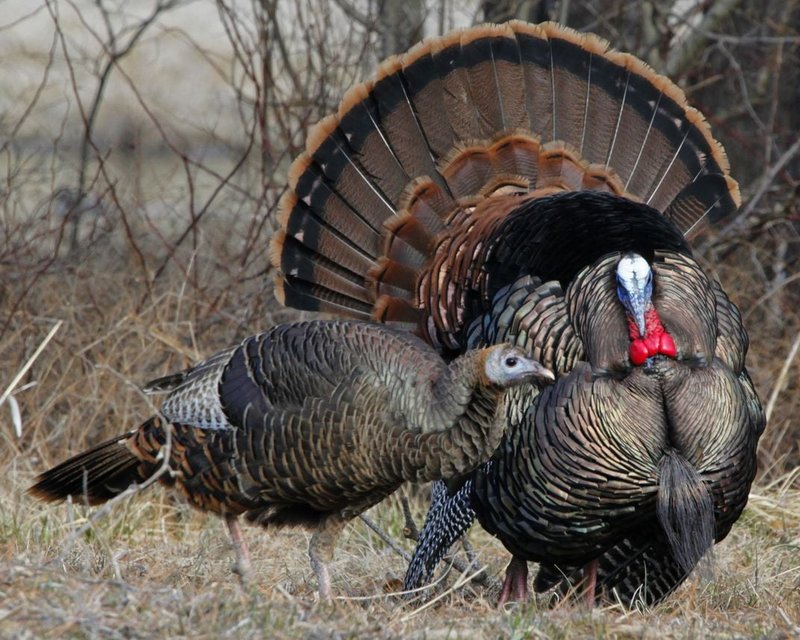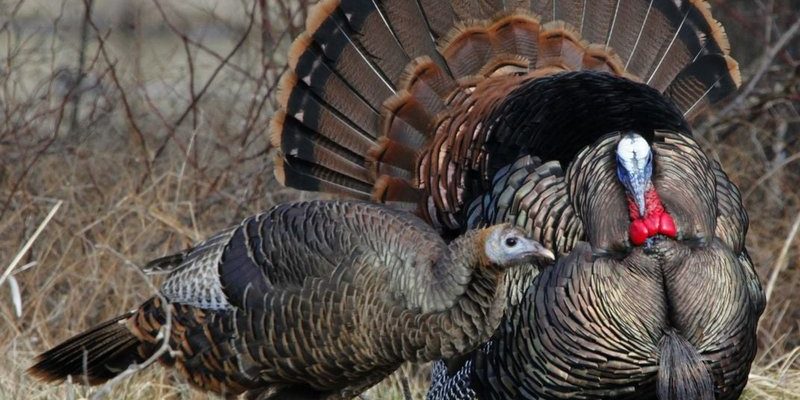
Let’s dive into the intriguing world of turkey courtship. From the vibrant plumage of males to their charming displays, these rituals have evolved over time. It’s a colorful spectacle full of sounds, sights, and sometimes even a bit of drama. If you’re curious about how these rituals work and what they signify in the broader context of turkey behavior, you’re in for a treat. So grab a cup of coffee, and let’s explore!
Understanding Turkey Courtship
Turkey courtship is all about attracting the right partner. Male turkeys, known as toms, have a few tricks up their sleeves (or rather, feathers) when it comes to wooing females, called hens. One of the most notable features of male turkeys is their vibrant plumage. During courtship, these feathers become even more brilliant, showcasing shades of iridescent greens, blues, and bronzes. This flashiness isn’t just for show; it plays a critical role in signaling health and vitality to potential mates.
Additionally, toms engage in a series of vocalizations that add to their allure. The classic “gobble” is perhaps the most recognized sound they make. But that’s just the beginning. They also create soft purrs and clucks, which help establish their presence and attract the attention of nearby hens. Honestly, if you’ve ever heard a turkey in the wild, you know they have a pretty impressive vocal range!
You might be wondering why all this effort is put into courtship. For turkeys, successful mating isn’t just about romance; it’s about ensuring the survival of their species. Males that can attract females effectively are more likely to pass on their genes, which is a fundamental part of natural selection. So, the next time you spot a turkey flaunting its feathers and gobbling away, remember: it’s all part of a crucial ritual to find a mate.
The Dance of the Tom Turkey
If you’ve ever seen a male turkey displaying, you know what a sight it can be. This is where the real show begins! Toms engage in a series of physical displays that are as much about showmanship as they are about winning the heart of a hen. The strut is one of the most engaging behaviors. During this performance, the tom raises its tail feathers, spreading them wide to create a fan-like shape. This display not only showcases the bird’s size but also highlights its beautiful plumage.
As the tom struts, it also inflates its wattles—the fleshy bits hanging from its neck—and puffs up its chest. The combination of size and color can be quite the spectacle! You can imagine this as a kind of flashy fashion show, where the most extravagant outfits gain the most attention.
The tom’s dance is often accompanied by a series of vocalizations. You might hear deep, resonant gobbles that carry across fields, attracting nearby hens. Interestingly, hens are particularly responsive to the rhythm and pitch of these gobbles, which can influence their attraction to different toms. It’s almost like a turkey talent show, where the best performers get the prize.
Hens’ Role in Courtship
While male turkeys might steal the spotlight during courtship, hens play an essential role in the process too. After all, the ultimate goal of all that strutting and gobbling is to catch the eye of a hen. Hens are selective when it comes to choosing a mate, often looking for characteristics that indicate the best genes for their offspring.
Once a tom has successfully attracted a hen, the dynamics shift. The female will evaluate the male’s strength and fitness, often by watching how he displays. If she finds a tom appealing, she may respond by moving closer, bobbing her head, or clucking softly. Communication is key here, as hens will use subtle body language to indicate their interest or disinterest.
Interestingly, hens also engage in their own displays. They might fluff up their feathers, bow, and even perform a series of movements that mimic the tom’s strut. This mutual display not only solidifies the mating bond but ensures that both parties are genuinely interested. In a sense, it’s a two-way street: while the tom is showing off, the hens are also assessing their options and making informed choices.
The Mating Process
Once a hen has chosen her mate, the next step is the actual mating process. It’s not as romantic as one might think! Turkeys engage in a brief but important courtship ritual before mating. The male will often dance around the female, continuing his displays to maintain her interest. When she’s ready, the pair will position themselves, and the actual mating can occur.
This process typically happens quickly, with the male mounting the female for just a few seconds. Unlike some birds that engage in elaborate courtship rituals, turkeys keep it simple. After mating, the pair may separate, with the hen seeking a nesting site to lay her eggs.
Interestingly, hens can mate with multiple males during the breeding season, which may increase genetic diversity among their chicks. This strategy allows for a better chance of survival for the offspring, as varied genetics can lead to healthier birds. So, when you see turkeys gathering in groups, it’s more than just socializing—it’s part of a larger reproductive strategy.
Nesting and Raising Young
Once mating is complete, the hen’s focus shifts to finding a suitable nesting site. Turkeys usually prefer secluded areas characterized by dense vegetation, which helps conceal the nest from predators. The hen will lay between 10 and 14 eggs, and once she’s settled in, she will incubate them for about 28 days.
During this incubation period, the hen is incredibly dedicated. She rarely leaves the nest, only briefly to eat and hydrate. This commitment is crucial for the survival of the eggs. After the chicks hatch, they are precocial, meaning they can walk and forage for themselves almost immediately. That said, they still rely on their mother for protection and guidance during the early days of their lives.
Here’s the thing: raising young turkeys (or poults, as they’re called) is a challenging task. The mother turkey must be vigilant against predators and environmental dangers. The success of this stage depends heavily on the hen’s ability to nurture and protect her young.
The Importance of Courtship in Turkey Population Dynamics
Understanding turkey courtship rituals isn’t just fascinating; it has significant implications for the population dynamics of these birds. Courtship behaviors influence mating success, which in turn affects the genetic health of the population. When toms fail to attract hens, it can lead to reduced numbers and weakened genetic diversity within the population.
Moreover, as habitats change and human activities impact turkey environments, adapting these rituals becomes essential. For example, if a tom’s display is no longer effective due to habitat loss or changes in the hen’s preferences, it could affect breeding success. Wildlife biologists monitor these behaviors to make informed conservation decisions, ensuring that turkey populations remain healthy.
Overall, the courtship and mating rituals of turkeys are a complex interplay of competition, attraction, and survival. By understanding these behaviors, we can appreciate the role they play in the broader ecosystem and contribute to preserving these fascinating birds.
In conclusion, the courtship and mating rituals of the turkey are a dazzling display of nature’s wonders. From vibrant plumage to vocal talents, these birds have evolved intricate methods of attracting mates. Whether it’s a tom’s strut or a hen’s careful selection, every aspect plays a vital role in the continuation of their species. So, the next time you see a turkey, take a moment to admire the intricate dance of love and survival unfolding right in front of you.

